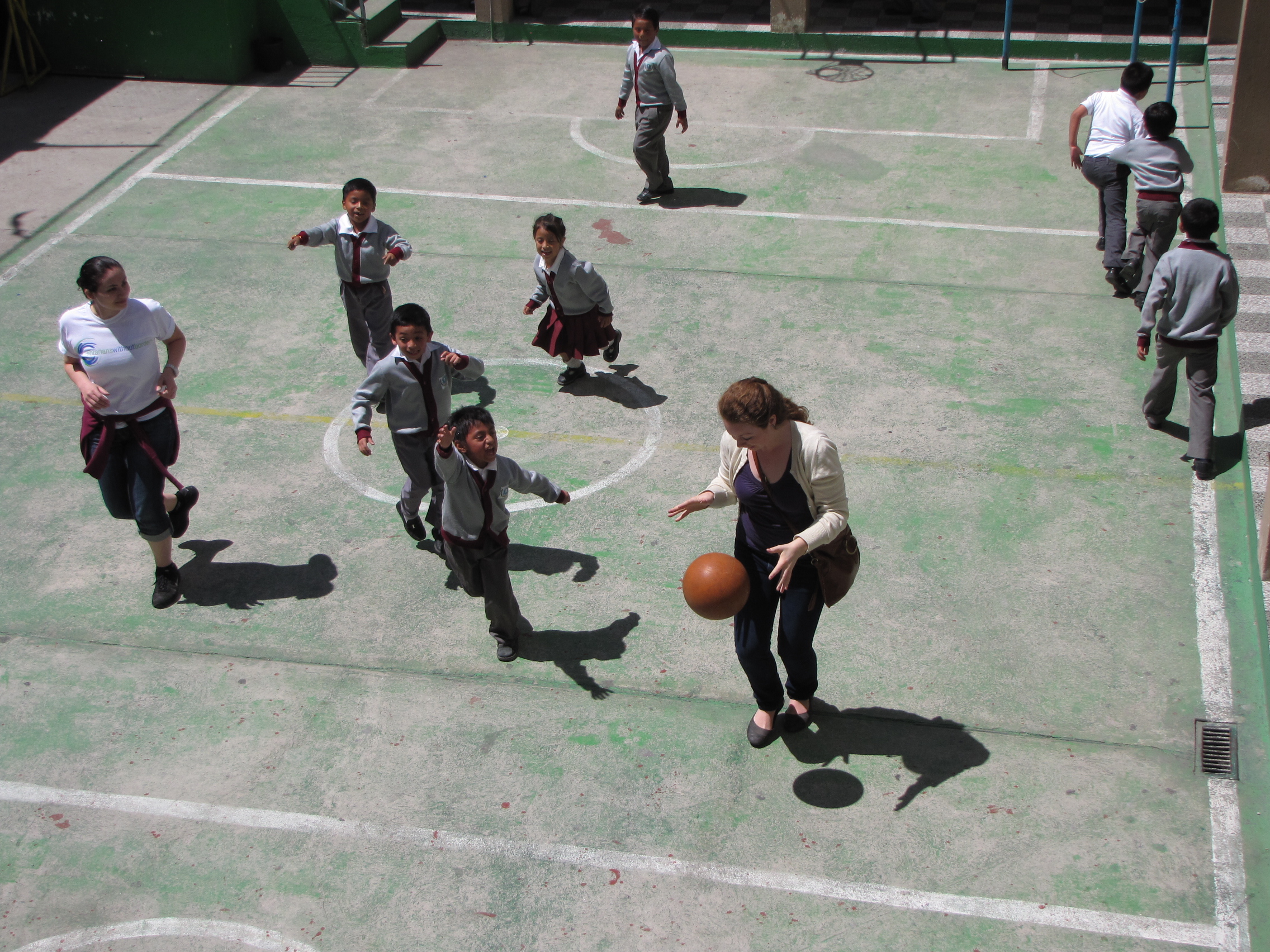This summer I attended the ISTE conference in Atlanta. Besides experiencing the Bucket of Love at Sway Restaurant and singing "Love Shack" to hundreds of people, I came back with lots of ideas to try in my classroom.

- Believe it or not, this happened BEFORE I sang "Love Shack" in front of hundreds of people.
The most intriguing (and entertaining) hourly session I attended was "Digital Storytelling through YouTube" by Steve Dembo (@teach42). Steve is an excellent speaker, and he kept the crowd engaged for an hour with his rapid-fire narrative delivery and his videos of goats. He had me at goats. Here is one example of what kept my attention:
I was very excited to try Steve's ideas for digital storytelling through YouTube. There were so many great projects, but three particularly resonated with me: Draw My Life, Swede It, and One Minute/One Take.
Anyone who is around children knows about Draw My Life, where an artist draws scenes from the voiceover narrative in fast motion on a whiteboard. Click
here for an example. Better yet, do what I told my students to do: spend some time browsing YouTube for good and bad examples of Draw My Life. What made the good examples interesting? How did they keep your attention? What were the themes that you took from them?
Swede It is a little more difficult to explain, especially as I am not a Jack Black fan, but here is how I understood it: There is a movie called Be Kind, Rewind that stars Jack Black, whose character runs a video store. For some reason the video tapes are damaged, and the owners need some money, so they re-do some of the movies using the cheap materials and equipment they have on hand. A customer rents Star Wars from them, and upon returning it says that it was the most bizarre version he had ever seen. Jack Black responds, "It's the Swedish version." This is a long way to go for a YouTube fad, but there is a Swede It trend where people try to copy scenes from major movies in the same manner (cheaply and probably in a silly manner).
One Minute/One Take condenses major movies into--you guessed it-- one minute done in one take of the camera. Click
here to see one version of
Forest Gump.
Steve presented these projects as remakes of movies, but he immediately put them into a digital storytelling perspective: How would your students present the Fibonacci numbers as a One Minute/One Take? They must condense something very complex into one minute. What do they consider important in that minute? What about the Cold War as a Swede It? What version would the students re-enact with the materials they have on hand? How can students convey the concept of Absurdism through a Draw My Life?
Inspired by the creativity in the project, I decided to jump right into a project of my own about. . .you guessed it: Absurdism. My Advanced Placement Literature and Composition students had read Albert Camus'
The Plague and Kurt Vonnegut's
Cat's Cradle for their summer reading, and we had tied those works into Camus' treatise on absurdism,
The Stranger. I was tired of assigning papers (almost as tired as my students were of writing them), and I wanted to know what my students understood about absurdism as it applies to these three novels. This is what I came up with after much discussion with my Blended Learning Colleagues:
Click here for a view of the whole project, including the rubric.
The Big Picture
You have read three novels that share the philosophy of absurdism. Your task is to portray absurdism in all three novels using the lens of nonconformity, religion, or human suffering/endurance. You will work in groups and present your project as a YouTube video. Here are the details:
The Questions: What is absurdism? How does the authors’ use of one thematic concept convey absurdism?
Thematic Concepts (choose one): Nonconformity, Religion, Human Suffering/Endurance
The Vehicle: Choose one of the three:
Draw My Life One Minute/One Take Swede It
The Method:
Day 1: Choose teams. Explore examples of the YouTube tools from the embedded links on the webpage. Discuss strategies.
Days 2-3: Research and gather evidence of the portrayal of absurdism through one of the three thematic concepts. Use Google Spreadsheet (Create-Spreadsheet) or insert a table in a Google doc (Insert-Table) to track your page numbers for the references in each novel. Share the table/spreadsheet with me through Google. (20 points)
Day 4: Storyboard. Use paper or a tool or app: Powerpoint, Google Presentation, Prezi, Lucid diagrams (Go to Google Drive, Create, Lucid), or any that suits you.
Day 5: Storyboard. Embed your storyboard in the discussion board by the end of the day. If you used paper, take pictures and embed them. If you used a Google app, share it with me. (30 points)
Once your storyboard is ready, you have one week to make your video, submit it to YouTube, and embed it in the discussion board.
The students enjoyed this project, and I heard some very insightful discussions during their collaboration time. The timeline was perfect; what I like best about it is that I turned the students loose to make their videos on their own. I find that when it comes to tech, it's better that I give the students a goal to reach without telling them how to get there. In this case, I knew the students would find the resources that worked best for them to create storyboards, load them into a discussion board on our LMS, film the videos, load them to YouTube, and embed them in the LMS. It would be counter productive for me to require them to use any certain tool or format to achieve the end result. I did spend some time teaching the concept of storyboards, and I think with younger students, it would be a good idea to give them some examples of storyboards or maybe create some together before letting them work in groups. Here are some of my students' projects:
What I like about using these three tools is that you can do this without technology. No access to storyboarding digital tools? Paper or posterboard will work just fine. You don't have the means to make a video? Why make one at all? Challenge your students to a live session of Swede It, One Minute/One Take, or Draw My Life. It beats the heck out of listening to the same speech over and over, and I bet your students will get just as much out of the collaboration and presentation as they would doing the project digitally. Plus, you don't have to grade papers! How genius is that?
While I truly believe in the value of sustained analysis (yes, my students still have to write papers), I think that condensing information down into its true essence (which may be different for everyone) is a valuable skill to teach our students. YouTube Digital Storytelling is one way we can use the tools they often already play with online to allow them to create meaning from complex ideas.
Plus, it generates funny bloopers.
Like what you read? Follow me on Twitter @itibrout
















